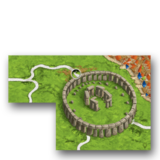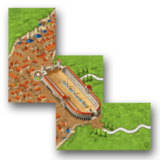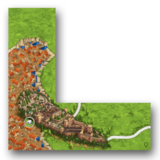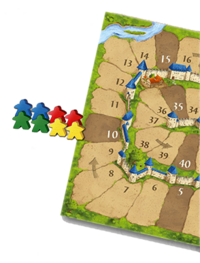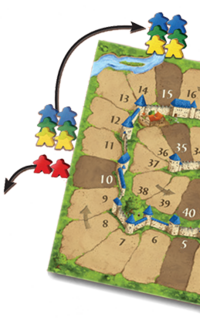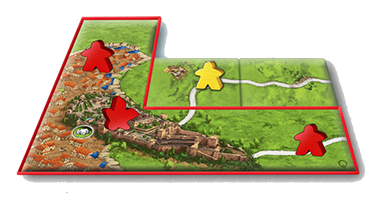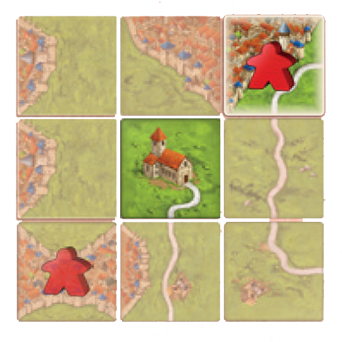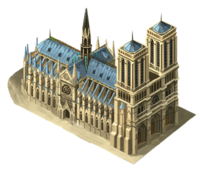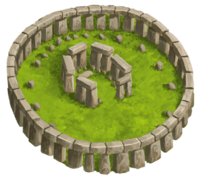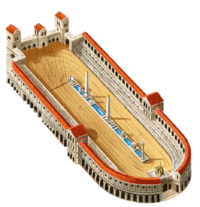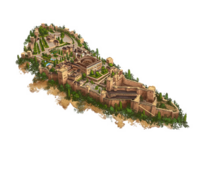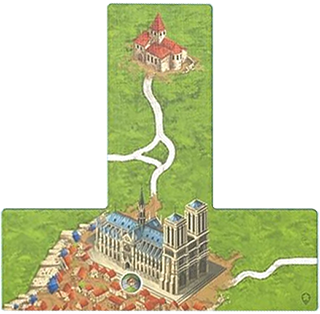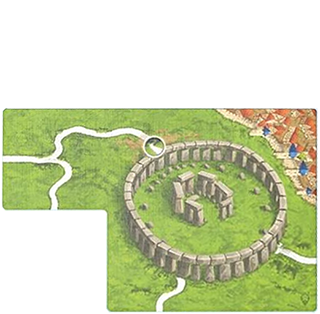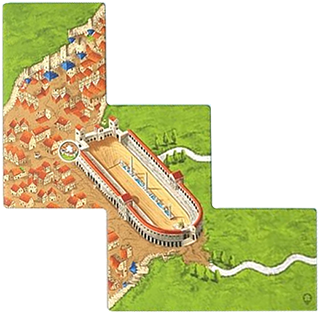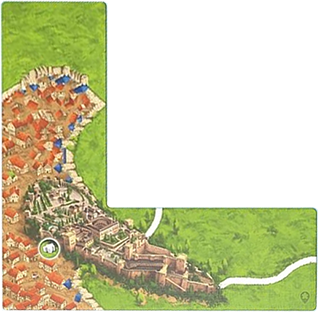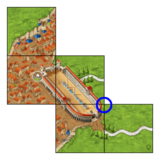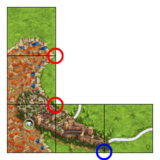Difference between revisions of "The Wonders of Humanity/nl"
(Created page with "'''De wonderen van de mensheid''' werd uitgebracht door Hans im Glück in {{Year|2023}}. De uitbreiding bevat wondertegels die zich uitstrekken over 5 velden in verschillende vormen. Op elke tegel staat een wonder dat door de mens in verschillende tijden is gebouwd. De eerste set bevat de volgende wonderen. Er komen meer sets: * Stonehenge, een prehistorisch monument bij Amesbury in het zuiden van Engeland (UK). * Circus Maximus, een oud Romeinse Ar...") |
(Created page with "<div style="display:table; text-align: center; border: 1px dotted #000000; padding: 10px; border-radius: 10px; margin: 15px;">''De wonderen der mensheid hebben Carcassonne bereikt. Elk van hen brengt je afzonderlijke voordelen. Maar iedereen kan er maar één per spel gebruiken. Kies snel het wonder dat je wilt om er zo vaak mogelijk van te profiteren.!''</div>") |
||
| Line 33: | Line 33: | ||
* Alhambra, een paleis- en vestingingscomplex uit de 13e eeuw in Granada, Spanje. | * Alhambra, een paleis- en vestingingscomplex uit de 13e eeuw in Granada, Spanje. | ||
<div style="display:table; text-align: center; border: 1px dotted #000000; padding: 10px; border-radius: 10px; margin: 15px;">''De wonderen der mensheid hebben Carcassonne bereikt. Elk van hen brengt je afzonderlijke voordelen. Maar iedereen kan er maar één per spel gebruiken. Kies snel het wonder dat je wilt om er zo vaak mogelijk van te profiteren.!''</div> | |||
<div style="display:table; text-align: center; border: 1px dotted #000000; padding: 10px; border-radius: 10px; margin: 15px;">'' | |||
</div> | |||
<div lang="en" dir="ltr" class="mw-content-ltr"> | <div lang="en" dir="ltr" class="mw-content-ltr"> | ||
Revision as of 12:27, 21 October 2023
De uitbreiding De Wonderen van de Mensheid bevat megategels ter grootte van 5 vakken in verschillende samenstellingen. Elke megategel bevat een wonder dat in verschillende tijden door de mens is gebouwd. Elk ervan geeft je afzonderlijke voordelen. Maar iedereen kan er per spel maar één gebruiken. Bemachtig snel een passend wonder om er zo vaak mogelijk van te profiteren!
Algemene informatie en opmerkingen
De wonderen van de mensheid werd uitgebracht door Hans im Glück in 2023. De uitbreiding bevat wondertegels die zich uitstrekken over 5 velden in verschillende vormen. Op elke tegel staat een wonder dat door de mens in verschillende tijden is gebouwd. De eerste set bevat de volgende wonderen. Er komen meer sets:
- Stonehenge, een prehistorisch monument bij Amesbury in het zuiden van Engeland (UK).
- Circus Maximus, een oud Romeinse Arena voor wagenrennen en massavermaak in Rome, Italië.
- Notre-Dame, een middeleeuwse gotische kathedraal in Parijs, Frankrijk.
- Alhambra, een paleis- en vestingingscomplex uit de 13e eeuw in Granada, Spanje.
This expansion has cities with clipped buildings.
Contents
- 4 wonder tiles with Wonders of Humanity (each one counts as 5 contiguous square tiles)
Rules
Preparation
We recommend you to play with at least 90 tiles and one additional meeple (e.g. Base game + 1st expansion). [1] Ignore any additional expansion rules.
- Each player takes all 9 meeples in one color. Place 2 meeples in each color next to the 10 space outside the scoreboard.
- Note: One of these two meeples is used only to mark your wonder. You can use the large meeple of the 1st expansion or any other figure in that color.
- Place a scoring meeple as usual on the 0 space of the scoreboard. All playes start the game with 6 meeples in their supply.
- Choose 1 wonder tile per player. Place them faceup next to the scoreboard. Discard the remaining wonder tiles, you do not need them for this game.
Placing a wonder tile
There is one wonder for each player. To receive a wonder tile, you must fulfill a condition. This falls under section 3. Scoring a feature described next:
3. Scoring a feature and getting a wonder tile
There is 1 wonder for each player. So you can get a wonder tile only once during the game.
When your scoring meeple reaches or exceeds the space with the meeple pairs (the first time it is the 10 space), you perform the following steps in sequence:
- Choose one of the wonder tiles available and place it in front of you. You don't place it on the game board yet (see 1. Placing a wonder tile).
- Take your two meeples next to the scoreboard and add them to your supply.
- Move all remaining meeples placed next to the scoreboard 5 spaces forward (i.e. the first time next to the 15 space, then next to the 20 space, and finally next to the 25 space).
- ATTENTION: You must never move the meeple pairs beyond the 25 space, even if there are more than 4 players. The meeples remain next to the 25 space until they are reached by all other scoring meeples.
Special case:
If several players reach the space with the meeple pairs on the same turn, the person whose turn it is chooses which of them will take a wonder tile. After that, the meeple pairs are moved 5 spaces forward as usual. If there are still scoring meeples from other players (who have not taken a wonder yet) on or past the space with the meeple pairs, the person whose turn it is decides again who will take the next wonder, and so on.
1. Placing a wonder tile
If there is a wonder tile in front of you, you do not draw a tile, but instead place your wonder tile according to the usual placement rules. Once you have placed it, you have to mark your wonder with one of the 2 meeples that you obtained along with the wonder tile. To do so, place the marker meeple in the center of the wonder (not on a city, road or field). This marker meeple remains there until the end of the game. For a better distinction from other meeples, you can put the marker meeple upside down.
Note: In the very rare case that there is no way to place the wonder tile correctly, you draw a tile that you must immediately place so that you can immediately place your wonder tile (on it) afterwards. If this is not possible either, the tile is removed from the game (even if it would have fit) and you draw another tile, and so on. You do not place a meeple on the additionally drawn tile.
2. Placing a meeple on a wonder tile
After you have placed and marked your wonder, you may immediately place up to 2 meeples on different unoccupied features (city, road, monastery or field) of this wonder tile. You may also place only one or no meeples. If you place 2 meeples, they may also be placed on the same square. [2]
3. Scoring a wonder
Each wonder has its own function that can earn you points. Some wonders give you points during the game, while others give you points at the end of the game. [3]
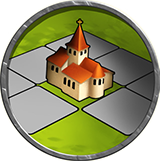 |
Notre-Dame
During the game (not during the turn in which you place the Notre-Dame wonder tile), if you place a meeple on one of the 8 tiles surrounding a monastery, you immediately score 3 points. It is irrelevant if the monastery has a monk or not. [4] Even if several monasteries are adjacent to the tile where the meeple is placed, you will "only" receive 3 points. [5] |
||||||||||
 |
Stonehenge
If you complete one or more occupied roads during your turn (not when playing the Stonehenge wonder tile itself), you immediately score 3 points for each road you complete (even if you don't have a meeple on the road yourself). After that, you score the road as usual. [6] |
||||||||||
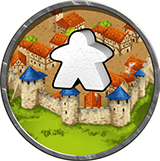 |
Circus Maximus
At the end of the game, depending on the number of players, you will receive points for each meeple of another color in still uncompleted cities:
| ||||||||||
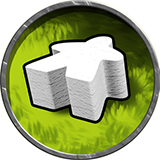 |
Alhambra
At the end of the game, you score 4 points for each of your farmers, regardless of whether they score any other points. |
||||||||||
Important!
- At the end of the game, you first score the wonders that score at the end of the game. After that, you continue with the normal final scoring.
- Each wonder tile counts as 5 individual normal tiles. Accordingly, the roads and cities can consist of more than one tile. You must take this into account during the scoring. Stonehenge and Notre-Dame each have a road that spans across 2 tiles. The Alhambra has a city that spans across 3 tiles, and the Circus Maximus has a city that spans across 4 tiles.[7]
The wonders in detail
Tile distribution
Voetnoten
Kijk op de Pictogrammen pagina voor uitleg over en licensering van de pictogrammen.
- ↑
 The initial version of the rules suggested playing with more than just the basic game tiles (about 90+) by adding any tiles you wanted (more basic game tiles or from the (mini) expansions, without applying their rules).
The initial version of the rules suggested playing with more than just the basic game tiles (about 90+) by adding any tiles you wanted (more basic game tiles or from the (mini) expansions, without applying their rules).
- ↑
 This means you may occupy any two different features on the wonder tile even if they are in the same square.
This means you may occupy any two different features on the wonder tile even if they are in the same square.
- ↑
 This sentence was removed from the revised rules, so the effect of the wonders start on your next turn after placing it:
This sentence was removed from the revised rules, so the effect of the wonders start on your next turn after placing it:
- Starting with the turn in which you place and mark your wonder, you can use it to score points.
- ↑
 This sentence was missing in the English rules.
This sentence was missing in the English rules.
- ↑
 This sentence was updated in the second revised rules released in 10/2023.
This sentence was updated in the second revised rules released in 10/2023.
- ↑
 This paragraph was updated in the revised rules released in 10/2023.
This paragraph was updated in the revised rules released in 10/2023.
- ↑
 Some wonder tiles include multiple cities spreading across multiple square spaces. Each space should be counted like a separate tile. The following images illustrate the number of road and city tiles to consider for each wonder tile:
Some wonder tiles include multiple cities spreading across multiple square spaces. Each space should be counted like a separate tile. The following images illustrate the number of road and city tiles to consider for each wonder tile:
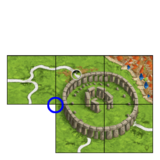
Stonehenge - One 2-tile road that forks into two open segments (top left and center)
- One 1-tile city (top right)
- Two 1-tile roads (bottom center and right)
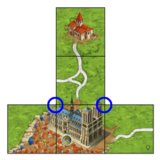
Notre-Dame - One 2-tile road with one open segment, which forks and ends at the monastery and the wonder (top and middle)
- One 2-tile city (bottom left and center)
- One 1-tile road (bottom right)




